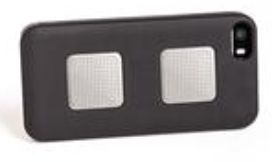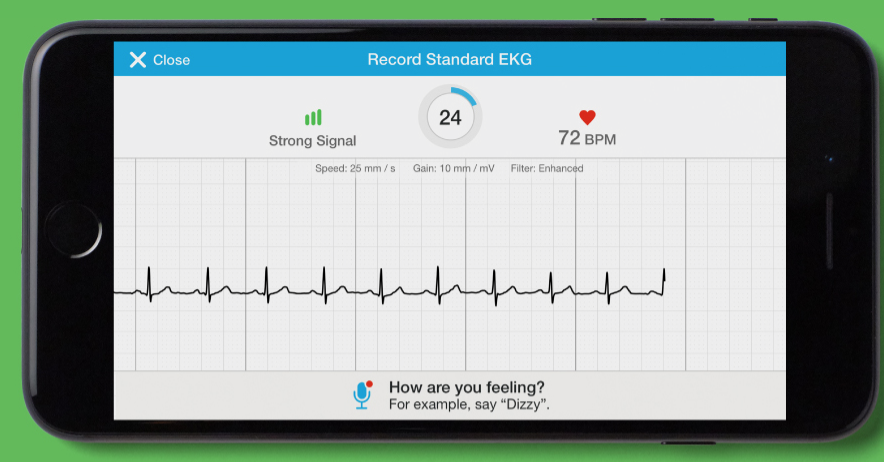Thanks everyone for your caring and kind wishes after you read last week’s post about my trip to the emergency room. And apologies to anyone who was left concerned about my state of health.
When I wrote the post, I thought “I’m fine” covered it.
But a phone call with our longtime friend Jean Thompson indicated otherwise. Jean is a great writer whom I was lucky to have as a writing teacher in grad school. As Jean put it during our conversation, “You might have added just a sentence or two of expository writing about the I’m fine part.”
I never, ever argue with my instructor on these matters. So under the better-late-than-never heading, here’s what happened: I had a bout with atrial fibrillation. I’d had a couple minor episodes months earlier and seen a cardiologist, who diagnosed them as afib. So we were on it. But this one lasted long enough to send me to the ER.

You just stick the sensors on the back of the phone…
Once there, the plan was to shock me back into rhythm and keep me overnight. But around midday I dozed off out of sheer boredom, and after I woke from my short nap I thought to myself, “Hey, I think it stopped.” And it had. Once I was no longer much of a priority, I was there for several more hours until tests could be performed and reviewed. Which is why I was there so long. I was OK. Nothing more boring than being OK in a hospital. But it beats not being OK in the hospital.
It’s all good now, though, under control, blah blah.
Sorry. That’s probably TMI. But, it leads me to the best part: My doctor told me about this thing called Kardia. It’s a phone app and a pair of special sensor pads that you affix to the back of your mobile phone (or the back of your mobile phone case). The upshot: You can do an EKG in 30 seconds using your phone. And it works.
Since I had this episode, I keep finding out that lots of people I know have afib or have had a bout or two. So I thought it worthwhile to let y’all know about this little gadget. It’s very accurate—they compared results on my phone to the monitor at the hospital and it was right on. And it helped break up the boredom.

download the app and it’s instant EKG.
Plus, it’s just so damn cool I can’t stand it. You just put two or more finger tips of your right hand on the right sensor, the tips of your left fingers on the other sensor, click the Record button on the screen with your thumb, and the dang thing shows you your heart rhythm for the next 30 seconds on a readout. It uses the phone’s microphone to measure your heart rhythm.
It keeps a journal, and, you can talk while you’re testing to describe how you’re feeling (fine, dizzy, whatever) and the thing records the voice and transcribes the note. You can also make notes about what you ate, drank, physical activity, etc.
The sensor device costs $99—but I got it at the holiday price of $75. Once you get it, you stick it to your phone (it’s extremely thin and light), download the free app, follow the instructions, and you get yer EKG done. Voila! When I’m not using it, it’s just another app, and doesn’t interfere with anything I normally do with the phone.
Oh, and the name of the company is Alivecor. The tagline is “Keep living.” I’m on board.
A + job, Mike! And thanks for telling us about the app. What will they think of next? Glad you still have a happy heart.
Glad you are just “fine” Mike! I was a tad worried too, but did not feel I could ask for more detail!
I find this device fascinating and so helpful. As a nurse and someone who has had several friends with heart rhythm issues, I just think it is so cool! Thanks for sharing!
Barbara Gaiither
There are also some free apps that you stick your finger over the camera and it reads your heart rate etc. They seem to be accurate so far.
Leave a Response